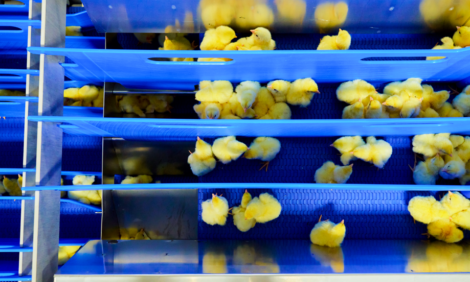



Mass Depopulation of Laying Hens in Whole Barns with Liquid CO2
Using liquid carbon dioxide for mass depopulation of laying hens was more expensive than catching and transporting cull hens for slaughter but Canadian researchers found that welfare and other benefits give this method clear advantages over traditional slaughter techniques.Appropriate emergency disaster preparedness is a key priority for agricultural agencies to allow effective response to serious avian disease outbreaks, according to P.V. Turner of the University of Guelph in Canada. In a paper published recently in Poultry Science, Turner and co-authors at the Canadian Food Inspection Agency, Ontario Ministry of Agriculture, Food and Rural Affairs and Praxair Canada Ltd explain that there is a need to develop rapid, humane and safe depopulation techniques for poultry that are widely applicable across a range of farm settings.
Whole barn depopulation with carbon dioxide has been investigated as a humane and efficient means of killing large numbers of birds in the event of a reportable disease outbreak. It has also been considered as a method for depopulating barns containing end-of-lay hens, particularly when there is limited local slaughter and rendering capacity.
Determining the best method of humanely killing large flocks of birds remains problematic and is being investigated by a coordinated international effort. While whole barn depopulation using carbon dioxide inhalation has been explored, physiological responses of chickens have not been characterised in field settings and assessment of animal welfare is hampered without this information.
In their study, 12 cull laying hens were surgically instrumented with telemetry transmitters to record electroencephalographs, electrocardiographs, body temperature and activity during two large-scale field carbon dioxide euthanasia trials of end-of-lay hens. The day following surgery, instrumented hens were placed in barns with other birds, barns were sealed and animals were killed by carbon dioxide inhalation delivered via a specially designed liquid carbon dioxide manifold.
Instrumented birds were monitored by infrared thermography, and ambient temperature, carbon dioxide and oxygen concentrations were recorded.
Results from these studies indicate that instrumented hens lost consciousness within two minutes of carbon dioxide levels reaching 18 to 20 per cent. Mild to moderate head shaking, gasping and one to two clonic muscle contractions were noted in hens before unconsciousness; however, brain death followed rapidly, within five minutes.
Evaluation of welfare costs and benefits suggest clear advantages of this method over catching and transporting cull hens for slaughter, according to Turner and co-authors. The financial costs with this method are higher, however, than those estimated for traditional slaughter techniques.
The Canadian group added that the results of these studies are being used to develop national protocols for whole barn depopulation of hens by carbon dioxide inhalation.
Reference
Turner P.V., H. Kloeze, A. Dam, D. Ward, N. Leung, E.E.L. Brown, A. Whiteman, M.E. Chiappetta and D.B. Hunter. 2012. Mass depopulation of laying hens in whole barns with liquid carbon dioxide: Evaluation of welfare impact. Poult. Sci., 91(7):1558-1568. doi: 10.3382/ps.2012-02139
Further ReadingYou can view the full report (fee payable) by clicking here. |
August 2012









